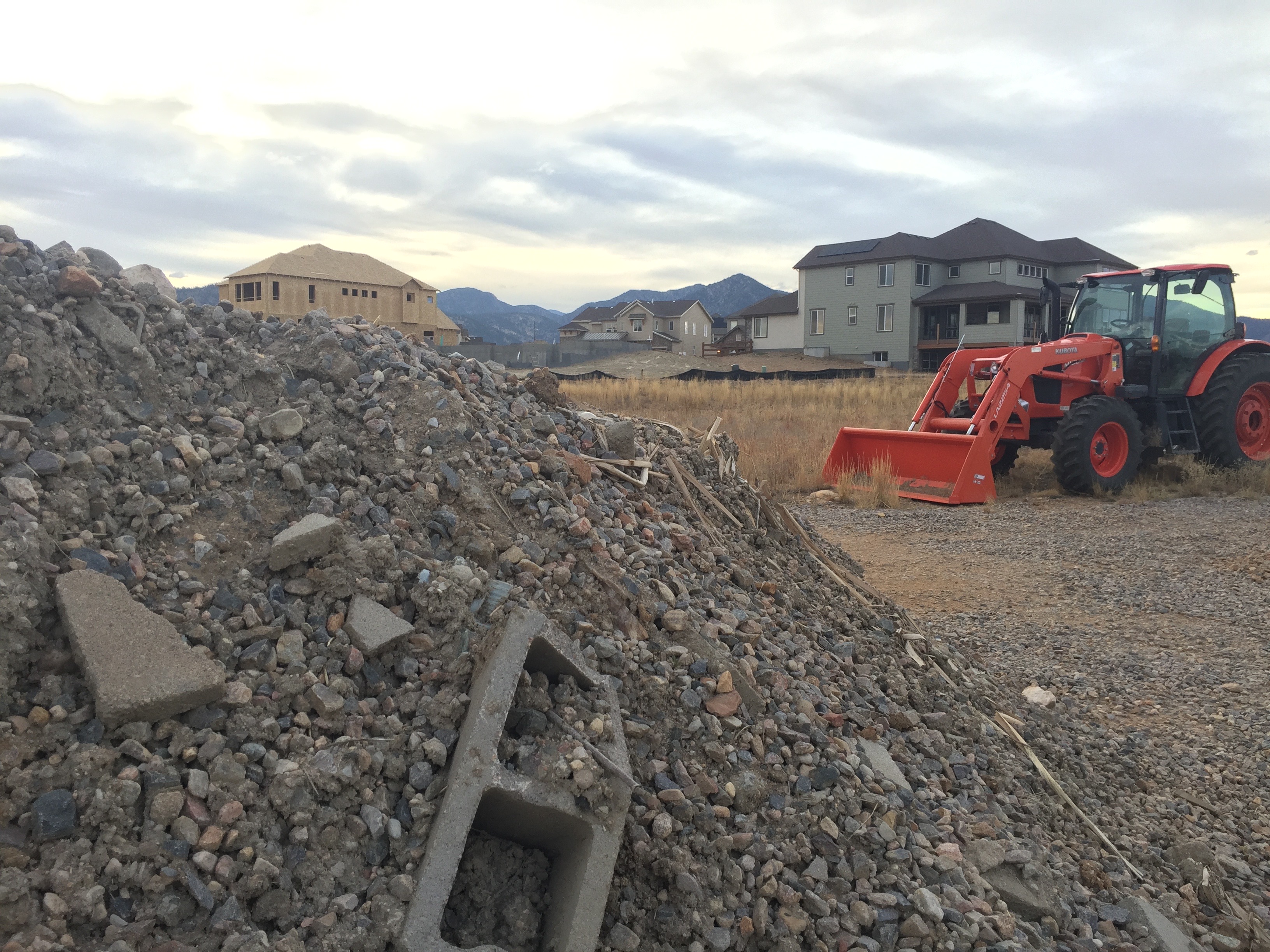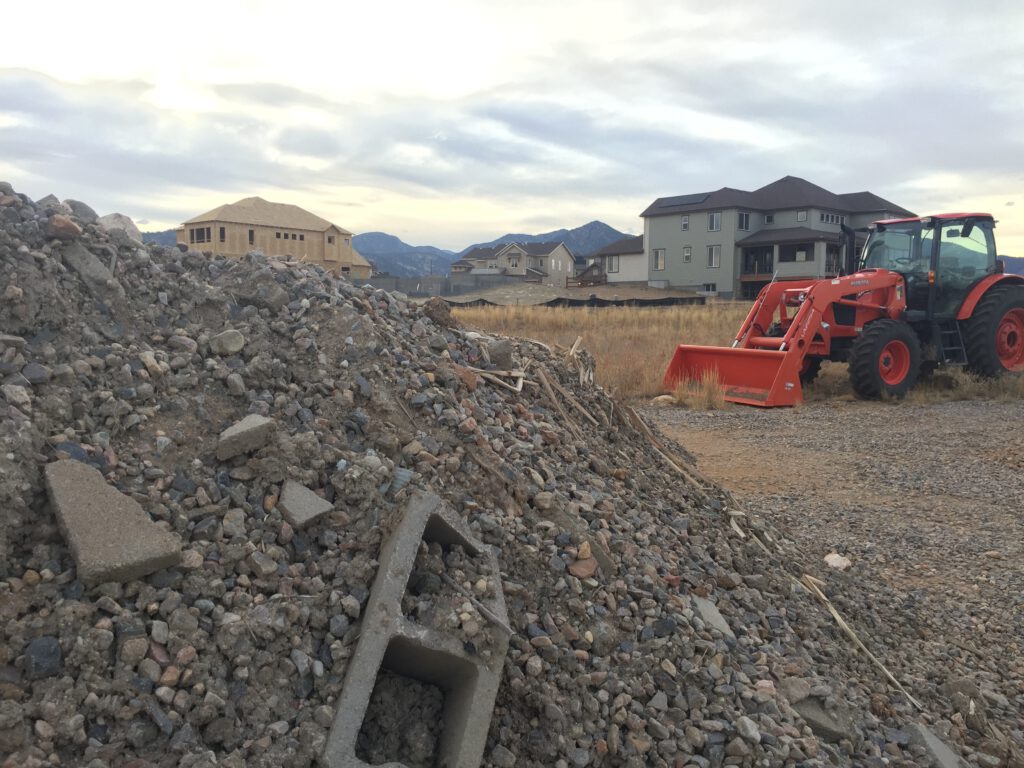Stephanie Malin, Assistant Professor of Sociology at Colorado State University and Becky Alexis-Martin, Senior Research Fellow in Human Geography at The University of Southampton
Within the boundaries of the Rocky Flats National Wildlife Refuge, black bears prowl, elk tussle, prairie dogs burrow and porcupines forage. A diverse array of wildlife, wedged between the cities of Boulder and Denver. Within this diverse habitat, small animals nestle into the grass and burrow into the dusty alluvial soil. Superficially, this site has been transformed from military industrial complex into an ordered wilderness. However, the heart of this refuge contains a burden of atomic mass, for this bleakly lovely space encircles a Superfund site with a startling and intrusive legacy of nuclear pollution. Welcome to Rocky Flats, a disquieting relic of the American military industrial complex.

Originally, Rocky Flats was occupied by swathes of pastoral farmland. It was selected for weapons manufacturing due to its underlying geological stability and its proximity to uranium sources and other nuclear installations, and was therefore purchased by the US Atomic Energy Committee. Beginning in 1952, Rocky Flats became an all-American home for manufacturing plutonium pits, which are the triggers that detonate nuclear weapons. Local residents were grateful to have well-paid jobs and production quietly ensued, the site itself wrapped in the furtiveness of Cold War industry. Within this culture of secrecy, little transgressions gradually emerged on-site at Rocky Flats. These grew in severity, and complete technological failure eventually occurred as human errors were silenced, accidents were hidden and toxicity was concealed.
Major fires occurred in 1957 and 1969, whilst unsealed barrels of radioactive waste leached and dispersed across the surrounding hinterland (Krey and Hardy, 1970). In 1972, US Congress authorised the purchase of a buffer zone of land around the site, when traces of plutonium and elevated levels of radioactive tritium were discovered within local reservoirs (Krey, 1976). Elevated levels of plutonium were identified within the topsoil beyond this zone, and so further land was purchased to expand this buffer zone. On-site regulation was used as a technology of control, to ensure that off-site contamination was never recognised.
Protests began when local residents became concerned about the safety of the facility. Activist mobilization escalated throughout the 1970s and 1980s, as several thousand people showed up to organized protests and sit-ins. Eventually, a large-scale protest occurred in August 1989, which attracted thousands of participants. This sustained public outcry was ignored by the nuclear sector. However, it was not possible to stifle the covert material that was provided by Rocky Flats workers to the Environmental Protection Agency, and a case was gradually built up through FBI agent Jon Lipsky’s extensive work with informants. The whistleblowing reached an apogee by June 6th 1989. Operation Desert Glow was implemented by the US Department of Justice to investigate the Rocky Flats plant. This raid issued a search warrant to the manager of Rocky Flats, and led to the discovery of multiple toxic violations of anti-pollution legislation.
An array of contaminants has been discovered at the Rocky Flats site, including polychlorinated biphenyls (PCBs), chromic acid, beryllium and radionuclides. Whilst chromium metal has little toxicity, chromic acid and similar hexavalent chromium compounds are both toxic and mutagenic (Barnhart, 1997; Baruthio, 1992). Symptoms of human exposure to hexavalent chromium can include: dermatitis, allergic and eczematous skin reactions, skin and mucous membrane ulcerations, allergic asthmatic reactions, bronchial carcinomas, and gastro-enteritis (Baruthio, 1992). Hexavalent chromium compounds also have ecological impacts, due to toxicity to plant life (Singh et al., 2013). Polychlorinated biphenyls (PCBs) are organochlorine compounds, and also have detrimental environmental and human health effects (Robertson and Hansen, 2015, Longnecker et al., 1997). PCB compounds are toxic and can cause abnormalities of liver function; skin and the nervous system; neonatal hypotonia or hyporeflexia; and increase the likelihood of exposed persons developing cancer. The detrimental effects of heavy radionuclides, including isotopes of plutonium, americium and curium, are also well documented within medical and environmental literature (Bair, 1974, Nénot and Stather, 2013, Newman, 2014). This includes genotoxic and stochastic effects that can increase the likelihood of the development of solid body tumours and blood cancers (Durakovic, 2016).
Like other places that have been squatted by the Cold War military-industrial complex, there is a notable absence of publically available information.
Unfortunately, it is not possible to access the final records of contamination for Rocky Flats. Like other places that have been squatted by the Cold War military-industrial complex, there is a notable absence of publically available information that documents the exact times, quantities and conditions of contaminant release. Even when the first special Grand Jury in Colorado’s history was convened in 1989 to hear the post-raid federal case against Rocky Flats’ corporate facility operators, Rockwell, the company paid fines amounting to less than they had earned in federal bonuses for operating the plant. The Grand Jury itself contested the trial and sentencing outcomes and felt that their recommendations had been illegally ignored (McKinley and Balkany 2004).
Rocky Flats has received relatively little international attention as a significant place of atomic and industrial toxicity. Somehow, its messy atomic history has been redacted, swallowed up alongside that of many other military nuclear installations and laboratories worldwide. Whilst the wildlife flourishes across Rocky Flats, despite a legacy of contamination, the local communities suffer invisibly.
Whilst the wildlife flourishes across Rocky Flats, despite a legacy of contamination, the local communities suffer invisibly.
A contaminated community?
Tiffany Hansen is a member of the down-winder community and founder of Rocky Flats Downwinders. She grew up in the shadow of the Rocky Flats plant. She remembers her father and brother working there. However, Tiffany did not realise the nuclear and covert nature of manufacturing, the military significance of the work that was undertaken, or the potential health effects that surrounded the site. She remained unaware of these risks until she developed ovarian and thyroid cancers as a young woman, and became acutely aware that her experience was not unique. She soon began organizing a community of people impacted by potential environmental health impacts of living near Rocky Flats. As Tiffany explains:
“It was a challenge to connect with former residents, there was no support, the research available was limited and difficult to find, and there was no organized advocacy… Since launching our website in 2015, I have heard from thousands of people, many like myself, who felt there was a strong connection between our health problems and the close proximity to the facility… I hear from people whose entire families are sickened, many lost loved ones, others are fighting or lost the fight for their lives.”
Tiffany’s observations echo the contested yet compelling evidence of cancers associated with toxic exposure, clustered within the communities that surround the site. These communities are the embodiment of their experiences of exposure (Brown, 2016).
It is challenging to design statistically significant epidemiological studies of the health effects of long-term, low-level toxic exposure to local communities due to confounding lifestyle factors, a neoliberalized, privatized healthcare system that cannot provide answers, and the economic migration of populations away from the plant after its closure. Whilst occupational health studies of exposure to Rocky Flats employees exist, they do not reflect community health, especially that of local women and children (Gilbert et al., 1989, Viet et al., 2000, Brown et al., 2004). Further, broader environmental and community health concerns highlight the related losses of livelihood, contamination concerns, anxieties, and somatic conditions associated with trauma such as those experienced by residents around Rocky Flats, steeped in uncertainty.
Thus, public health risks remain stressfully uncertain and undefined. The Colorado Department of Public Health and Environment recently released a study showing elevated rates of certain cancers in the communities surrounding Rocky Flats, but without the community-based component that people have requested. The study did not examine cancers such as thyroid, despite community-based requests to do so, and some critics assert that the agency works with large state-wide samples that dilute evidence of cancer clusters and hot spots due to the chosen methodological approach.
Access to information about the site has been difficult to acquire – particularly for people moving in to new homes on and around the former plant grounds. To some, this is the most significant concern. Dedicated community activist, Alesya Casse, who co-founded the group Candelas Glows, leads actions and community meetings to educate the community and speaks regularly about keeping new construction and the public off of the site and the Wildlife Refuge. Casse states:
“It’s disheartening to see government agencies continue with their legacy of turning ‘weapons into wildlife’ in the face of community opposition and concern. People have a right to know the history of the area and to make informed decisions for themselves and their families. What happened at Rocky Flats is both tragic and unfortunately common, but we have an opportunity to make it right by informing the public of the risks and doing comprehensive testing to address ongoing concerns and questions that continue to arise.”
The future is unwritten
It has been 28 years since the FBI first raided Rocky Flats, and eleven years since the US Environmental Protection Agency announced the completion of on-site remediation activities. Whilst some of its clandestine toxic secrets have been unveiled, many mysteries still surround the on-going and long-term effects of this multi-contaminant environmental and social disaster. It is impossible to say what the future holds for the local community of Rocky Flats in the face of landscape regeneration, contested diagnoses, unmedicalised conditions, and denial of people’s experiences. Importantly, the long-term outcomes for this community could still yet be affected by the presidency of Donald Trump, as he has already called for sites such as Rocky Flats to be repurposed yet again as repositories for nuclear waste or even revitalized nuclear production.

In response, collaborative social science and public health research by Metropolitan State University and Colorado State University aims to discern the social and cultural impacts to health of being a Rocky Flats downwinder. Already, the health survey component of this study has found that 46% of the reported cancers are defined as ‘rare’ and are often directly related to radiation exposure. Whilst we cannot anticipate if this unique community will ever truly gain environmental or social justice, we continue to develop our understanding of the significant influence that nuclear accidents and nuclear defence has had upon their lives. In the meantime, the Rocky Flats downwinders continue to exist, without a true understanding of the future implications of their toxic fate.
References
BAIR, W. J. 1974. Toxicology of plutonium. Advances in radiation biology, 4.
BARNHART, J. 1997. Chromium chemistry and implications for environmental fate and toxicity. Soil and Sediment Contamination, 6, 561-568.
BARUTHIO, F. 1992. Toxic effects of chromium and its compounds. Biological trace element research, 32, 145-153.
BROWN, K. 2016. The Last Sink: The Human Body as the Ultimate Radioactive Storage Site. Mauch, Christof (Hg.), Out of Sight, Out of Mind. The Politics and Culture of Waste, RCC Perspectives, München, 41-47.
BROWN, K. L. 2013. Plutopia: Nuclear families, atomic cities, and the great soviet and American plutonium disasters, Oxford University Press, USA.
BROWN, S. C., SCHONBECK, M. F., MCCLURE, D., BARÓN, A. E., NAVIDI, W. C., BYERS, T. & RUTTENBER, A. J. 2004. Lung cancer and internal lung doses among plutonium workers at the Rocky Flats Plant: a case-control study. American journal of epidemiology, 160, 163-172.
DURAKOVIC, A. 2016. Medical effects of internal contamination with actinides: further controversy on depleted uranium and radioactive warfare. Environmental health and preventive medicine, 21, 111-117.
GILBERT, E. S., FRY, S. A., WIGGS, L. D., VOELZ, G. L., CRAGLE, D. L. & PETERSEN, G. R. 1989. Analyses of combined mortality data on workers at the Hanford site, Oak Ridge National Laboratory, and Rocky Flats nuclear weapons plant. Radiation research, 120, 19-35.
KREY, P. W. 1976. Remote plutonium contamination and total inventories from Rocky Flats. Health Physics, 30, 209-214.
KREY, P. W. & HARDY, E. P. 1970. PLUTONIUM IN SOIL AROUND THE ROCKY FLATS PLANT. New York Operations Office (AEC), NY Health and Safety Lab.
LONGNECKER, M. P., ROGAN, W. J. & LUCIER, G. 1997. The human health effects of DDT (dichlorodiphenyltrichloroethane) and PCBs (polychlorinated biphenyls) and an overview of organochlorines in public health 1. Annual review of public health, 18, 211-244.
MALIN, S. A. 2015. The Price of Nuclear Power: Uranium Communities and Environmental Justice, Rutgers University Press.
NÉNOT, J.-C. & STATHER, J. W. 2013. The Toxicity of Plutonium, Americium and Curium: A Report Prepared Under Contract for the Commission of the European Communities Within Its Research and Development Programme on Plutonium Recycling in Light Water Reactors, Elsevier.
NEWMAN, M. C. 2014. Fundamentals of ecotoxicology: the science of pollution, CRC press.
ROBERTSON, L. W. & HANSEN, L. G. 2015. PCBs: recent advances in environmental toxicology and health effects, University Press of Kentucky.
SINGH, H. P., MAHAJAN, P., KAUR, S., BATISH, D. R. & KOHLI, R. K. 2013. Chromium toxicity and tolerance in plants. Environmental chemistry letters, 11, 229-254.
VIET, S. M., TORMA-KRAJEWSKI, J. & ROGERS, J. 2000. Chronic beryllium disease and beryllium sensitization at Rocky Flats: a case-control study. AIHAJ-American Industrial Hygiene Association, 61, 244-254.
